Draft TARFish response to proposed rock lobster harvest strategy
Rock lobster is one of the most important fisheries to Tasmania’s recreational fishers.
Recreational rock lobster fishers only take about 10% of the total catch of rock lobster – with the remaining 90% caught by the commercial sector.
Over 17,000 Tasmanians bought a rock lobster licence last year and around three quarters of the recreational catch and effort comes from the East and South East coasts, demonstrating the huge importance of the region to recreational fishers.
Importantly, The ABARES National Recreational Fishing Survey showed that in Tasmania, recreational fishing contributes:
· $270m to Gross State Product (GSP)
· Supports 2,670 FTE jobs in Tasmania
This is more than commercial abalone, rock lobster and scale fishing combined, which contribute $186m and supports 1,052FTE’s.
Recreational rock lobster fishing isn’t just a contributor to “social and lifestyle” benefits in Tasmania – it is an economic powerhouse. Just ask any bakery, petrol station, pub, small supermarket or real estate agent in regional and coastal communities.
Recreational rock lobster fishers, through licence fees and fisher participation in regional coastal communities are a significant contributor to the positive economic impact of recreational fishing in Tasmania and all at a fraction of the harvest of the commercial sector.
As the representative body for Tasmania’s recreational rock lobster fishers we are seeking:
a. full recognition of our economic and social benefits
b. protected access to the places where we fish
c. stock rebuilding that improves recreational fisher satisfaction and maximises community benefit
d. no attempt to undermine the 170 tonne allocation to the recreational sector
Below is a summary of the key points in TARFish’s draft response to the State Government’s Draft Harvest Strategy.
Key points:
1. Biomass target should be Maximum Economic Yield (MEY) rather than Maximum Sustainable Yield (MSY)
Maximum Econcomic Yield (MEY) is typically achieved at 48% biomass and Maximum Sustainable Yield (MSY) is a biomass level of around 40%
MEY would improve recreational fisher satisfaction and maximise community benefit because of the greater abundance of lobsters at this level.
Further, the management objective for the commercial fishery has been maximum economic yield for the last ~ 30 years because this is the purpose of ITQ systems, it therefore follows that the default rational biomass target for the commercial fishery in the harvest strategy must be MEY rather than MSY.
2. Building toward the biomass target - ambitious rebuild timeframes needed
TARFish recommends that biomass rebuild target timeframes should be ambitious and supports 10-year rather than a 20-year rebuild as well as recognising the need for an analysis of social and economic factors (including recreational) to support this decision.
3. Resource sharing remains a major and unresolved issue for all sectors and has direct implications for the application of the HS decision rules and implications for all sectors.
Resource sharing must be resolved before the Harvest Strategy is finalised.
As a core principle, any future area-based catch sharing arrangements (such as that implemented as part of the East Coast Stock Rebuilding Strategy) must include recognition of the significance of the area of interest to the recreational sector, giving consideration to the proportion of statewide catch, effort and numbers of fishers regularly accessing the area, as well as the capacity for the sector to structurally adjust to the arrangements.
It should be noted that reference to the statewide resource allocation (section 4.11of the Harvest Strategy) incorrectly states that if the Total Allowable Commercial Catch (TACC) is less than 1700 tonnes that the Total Allowable Recreational Catch (TARC) is 170 tonnes. This is not correct.
The correct interpretation is: if the Total Allowable Catch (TAC) is less than 1700 tonnes, the TACC is calculated as TAC minus 170 tonnes.
4. The East Coast fishery is of critical importance to recreational fishers
An analysis of the last twenty years of recreational catch highlight two key characteristics of the recreational sector:
- a high level of dependence and importance of access to both proposed east coast areas, and
- a lack of capacity of the sector to redirect catch and effort to regions outside of the east coast, even during a period of reduced stock availability and increasingly restrictive management measures.
In addition, commercial employment on the east coast as a government or industry priority is disingenuous given all the actions taken to reduce viable jobs in the fishery over the last ~30 years.
5. Include a recreational fishing quality index as part of the secondary performance indicators
The most commonly used recreational performance indicator in Australian Harvest Strategies is recreational participation rate (e.g. number of licence holders and/or active fishers). This is ideally combined with satisfaction scores from survey data to provide an index of recreational fishery performance, i.e.:
Recreational Fishing Quality Index = number of active recreational fishers x average fisher satisfaction score.
6. The total allowable recreational catch (TARC) of 170 tonnes must be protected and respected
Recreational fishers have not come close to catching their 170 tonne allocation in over a decade and yet have experienced significant application of management changes including shorter seasons and reduced bag limits.
Additionally, when calculating the total allowable commercial catch, the actual recreational catch is used, not allowable catch. This means that there has been between 70-100 tonnes additional support provided to hold up the commercial catch. TARFish would argue that the allowable catch should be used to support quicker stock recovery.
We welcome your feedback and suggestions to improve our response - if you have comments or ideas, please email us at info@tarfish.org or call 0428 861 710
